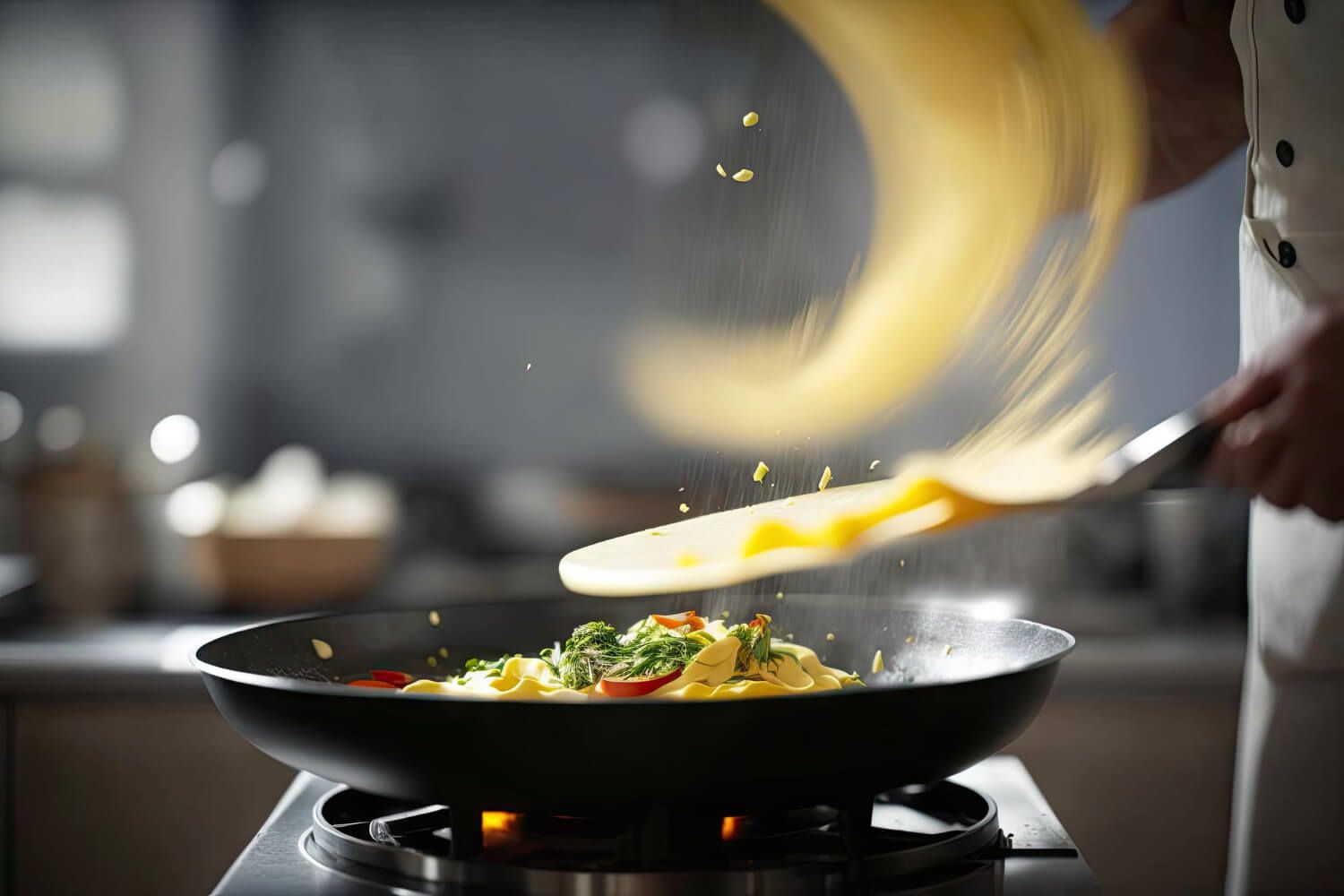Cooking on a gas stove offers a level of control unmatched by electric models.
As you adjust the heat, it changes instantly, allowing you to prevent burning pots or pans, making meals more delicious.
However, it's essential to use the right frying pans for gas stoves to ensure safety and efficiency.
This micro-post will guide you through the essentials of using frying pans safely on gas stoves.
In This Article
- Importance of Using the Right Frying Pan for Gas Stoves
- Understanding Different Materials
- Essential Safety Tips for Using Frying Pans on Gas Stoves
- How to Clean and Maintain Your Frying Pans
- Conclusion
- Frequently Asked Questions
- Further Reading
Importance of Using the Right Frying Pan for Gas Stoves
Not all frying pans are created equal, especially when it comes to cooking on gas stoves. The type of pan you use can significantly impact your cooking, from the evenness of cooking to the time it takes to heat up. For gas stoves, you'll want to choose frying pans that conduct heat well to take advantage of the stove's efficiency.
Understanding Different Materials
The material can make a huge difference when it comes to frying pans. Here are some common materials used in frying pans:
- Stainless Steel: Durable and easy to clean, stainless steel pans offer excellent heat distribution, making them a good choice for gas stoves. However, they can be a bit tricky to handle as food tends to stick to the surface unless well-oiled.
- Cast Iron: Known for their heat retention, cast iron pans are perfect for slow cooking and browning. They're incredibly durable, but they take longer to heat up and require more effort to maintain.
- Non-Stick: These pans are great for cooking delicate foods like eggs or fish. They're easy to clean and require less oil for cooking, but they may not distribute heat as evenly as other materials.
Essential Safety Tips for Using Frying Pans on Gas Stoves
Safety should always be your top priority when cooking, especially on gas stoves. Here are some essential safety tips:
- Manage the Flame: Ensure the flame doesn't reach out from under the cookware. A flame that's too large can be a fire hazard.
- Use the Right Size Pan: The pan should match the size of the burner. Using a pan that's too small can cause the handle to heat up, while a pan that's too large can lead to uneven cooking.
- Handle with Care: Always use oven mitts or pot holders when handling hot pans. Also, ensure the handle is not over the edge of the stove, where it can be knocked over.
- Keep the Area Clean: Spills and grease can catch fire, so keeping your cooking area clean is important. Also, ensure there's nothing flammable near the stove, like paper towels or curtains.
How to Clean and Maintain Your Frying Pans
Proper cleaning and maintenance can extend the life of your frying pans:
- Cool Down: Always let the pan cool down before cleaning to prevent warping.
- Avoid Abrasives: Avoid using abrasive cleaners or brushes that can damage the surface for non-stick pans.
- Seasoning Cast Iron: Cast iron pans must be regularly seasoned to maintain their non-stick properties. This involves coating the pan with a layer of oil and heating it.
- Regular Inspection: Regularly inspect your pans for any signs of damage. If you notice any cracks, warping, or if the non-stick coating is flaking off, it's time to replace the pan.
Conclusion
Using the right frying pans and following safety tips can significantly improve your cooking experience on gas stoves. Remember, the key to safe cooking is awareness and understanding of the tools you're using. So, take the time to learn about your cookware and how to use it safely and efficiently.
Frequently Asked Questions
Can you use any frying pan on a gas stove?
While you can technically use any frying pan on a gas stove, some materials work better than others. Stainless steel and cast iron pans are generally good choices for gas stoves.
What are the best pans to cook with on a gas stove?
The best pans to cook with on a gas stove are those that conduct heat well, such as stainless steel and cast iron pans. Non-stick pans can also be used but may not heat as evenly.
What to avoid when using a gas stove?
When using a gas stove, avoid using pans that are too small or too large for the burner, leaving the flame unattended and allowing grease or food spills to build up.
How do you cook safely on a gas stove?
To cook safely on a gas stove, always monitor the flame, use the right size pans, keep the area clean, and handle hot pans with care.
Further Reading
- Heat Distribution in Frying Pans: The Gas Stove Advantage - Discover the science behind how gas stoves provide superior heat distribution in frying pans, enhancing your cooking experience.
- Gas Stove Cooking: Advanced Techniques with Frying Pans - Take your gas stove cooking to the next level with these advanced techniques using frying pans.
- For a thorough analysis by Columbia University Mailman School of Public Health on the health risks of gas stoves, check out the article: 'What Science Says About the Health Risks of Gas Stoves.’
- If you're looking for a new best frying pan for your gas stove, check out our article on the best frying pan for a gas stove.



